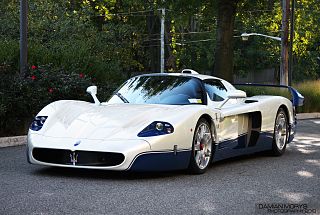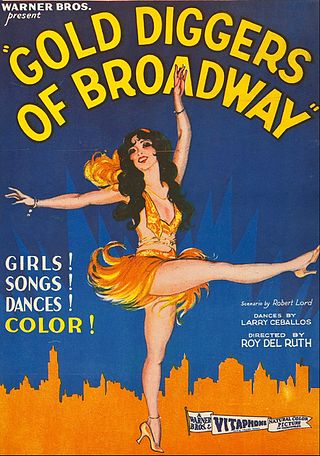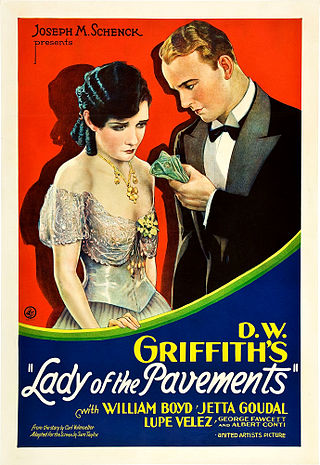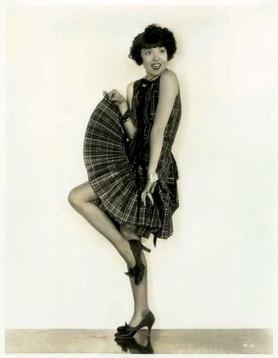German organizations
- Vitaphone GmbH – a German telecommunications company which supplies hospitals
- Vitaphone Racing – a German racing team sponsored by Vitaphone GmbH
"Vitaphone" can refer to:

The Jazz Singer is a 1927 American musical drama film directed by Alan Crosland and produced by Warner Bros. Pictures. It is the first feature-length motion picture with both synchronized recorded music and lip-synchronous singing and speech. Its release heralded the commercial ascendance of sound films and effectively marked the end of the silent film era with the Vitaphone sound-on-disc system, featuring six songs performed by Al Jolson. Based on the 1925 play of the same title by Samson Raphaelson, the plot was adapted from his short story "The Day of Atonement".

Vitaphone was a sound film system used for feature films and nearly 1,000 short subjects made by Warner Bros. and its sister studio First National from 1926 to 1931. Vitaphone was the last major analog sound-on-disc system and the only one that was widely used and commercially successful. The soundtrack was not printed on the film itself, but issued separately on phonograph records. The discs, recorded at 33+1⁄3 rpm and typically 16 inches (41 cm) in diameter, would be played on a turntable physically coupled to the projector motor while the film was being projected. It had a frequency response of 4300 Hz. Many early talkies, such as The Jazz Singer (1927), used the Vitaphone system. The name "Vitaphone" derived from the Latin and Greek words, respectively, for "living" and "sound".
Sound-on-disc is a class of sound film processes using a phonograph or other disc to record or play back sound in sync with a motion picture. Early sound-on-disc systems used a mechanical interlock with the movie projector, while more recent systems use timecode.

The Maserati MC12 is a limited production two-seater sports car produced by Italian car maker Maserati to allow a racing variant to compete in the FIA GT Championship. The car entered production in 2004, with 25 cars produced. A further 25 were produced in 2005 after the FIA changed the rules and reduced the maximum length allowed. The second batch of 25 are 150mm shorter than the originals, making a total of 50 cars available for customers. With the addition of 12 cars produced for racing, a total of just 62 were ever produced.
ARCA or Arca may refer to:

Don Juan is a 1926 American romantic adventure film directed by Alan Crosland. It is the first feature-length film to utilize the Vitaphone sound-on-disc sound system with a synchronized musical score and sound effects, though it has no spoken dialogue. The film is inspired by Lord Byron's 1821 epic poem of the same name. The screenplay was written by Bess Meredyth with intertitles by Maude Fulton and Walter Anthony.

Gold Diggers of Broadway is a 1929 American pre-Code musical comedy film directed by Roy Del Ruth and starring Winnie Lightner and Nick Lucas. Distributed by Warner Bros., the film is the second all-talking, all-Technicolor feature-length film.

Andrea Bertolini is an Italian professional racing driver currently driving for AF Corse in the FIA World Endurance Championship. He is the official test driver of the Maserati factory. Bertolini began racing at a young age, working as the youngest ever test driver for Ferrari at 19, followed by work in the experimental and development department. He also participated in the development of the Maserati MC12, in which he has enjoyed racing success winning for three times the FIA GT Championship in GT1 class, and also claiming the first edition of the FIA GT1 World Championship. He won the WEC championship in GTE Am category in 2015 and in the same year he won the 24H of Le Mans in the same class.
Vitaphone Racing, or Vita4One, was a German racing team who participate in the FIA GT Championship. The team was actually Bartels Motor & Sport GmbH, but operated under the title of its main sponsor, Vitaphone GmbH. They have successfully raced the Maserati MC12 GT1 since 2005, becoming one of the most successful GT teams in the series with five FIA GT1 Teams' Championship and four FIA GT1 Drivers' Championship. Their chief drivers are Michael Bartels and Andrea Bertolini.

Hamann Motorsport GmbH is a German car tuning company based in Laupheim. It specialises in Audi, Aston Martin, Bentley, BMW, Mini, Ferrari, Fiat, Jaguar, Land Rover, Maserati, Mercedes, Rolls-Royce, Porsche and Lamborghini cars. Hamann Motorsport was founded by Richard Hamann in 1986.
Audi Sport GmbH, formerly known as quattro GmbH, is the high-performance car manufacturing subsidiary of Audi, a subsidiary of the Volkswagen Group.
Is Everybody Happy? (1929) is an American pre-Code musical film starring Ted Lewis, Alice Day, Lawrence Grant, Ann Pennington, and Julia Swayne Gordon, directed by Archie Mayo, and released by Warner Bros. The music for the film was written by Harry Akst and Grant Clarke, except for "St. Louis Blues" by W. C. Handy and "Tiger Rag". The film's title comes from Lewis's catchphrase "Is everybody happy?"

Lady of the Pavements is a 1929 American silent romantic drama film directed by D. W. Griffith and starring Lupe Vélez, William Boyd, and Jetta Goudal. The screenplay was written by Sam Taylor, with contributions from an uncredited Gerrit Lloyd. Griffith reshot the film to include a few musical sequences, making it a part-talkie.

My Man is a 1928 black and white part-talkie American comedy-drama musical film directed by Archie Mayo starring Fanny Brice and featuring Guinn "Big Boy" Williams. It was Brice's feature film debut at the age of 37. She was a star in the Ziegfeld Follies before she started acting in motion pictures. At the time Warner Bros. made this film there were still some silent movies in production and being released. My Man used intertitles but included talking sequences, synchronized music, and sound effects using a Vitaphone sound-on-disc system. It was not until 1929 that talking movies would completely take over, but Warner Bros. had completely stopped making silent movies and switched to sound pictures by the end of that year, either part talking or full talking. Warner Bros. also started making movies in color as well as sound movies.

Smiling Irish Eyes (1929) is a Vitaphone American pre-Code musical film with Technicolor sequences. The film is now considered a lost film. However, the Vitaphone discs still exist.

The Terror is a 1928 American pre-Code horror film written by Harvey Gates and directed by Roy Del Ruth, based on the 1927 play of the same name by Edgar Wallace. It was the second "all-talking" motion picture released by Warner Bros., following Lights of New York. It was also the first all-talking horror film, made using the Vitaphone sound-on-disc system.

Bel Air is the fourth studio album by the German alternative rock band Guano Apes, and the first released after the band's reunion in 2009. It was released on 1 April 2011 on Columbia Europe, eight years after their previous album Walking on a Thin Line.
Vitaphone Varieties is a series title used for all of Warner Bros.', earliest short film "talkies" of the 1920s, initially made using the Vitaphone sound on disc process before a switch to the sound-on-film format early in the 1930s. These were the first major film studio-backed sound films, initially showcased with the 1926 synchronized scored features Don Juan and The Better 'Ole. Although independent producers like Lee de Forest's Phonofilm were successfully making sound film shorts as early as 1922, they were very limited in their distribution and their audio was generally not as loud and clear in theaters as Vitaphone's. The success of the early Vitaphone shorts, initially filmed only in New York, helped launch the sound revolution in Hollywood.

The Better 'Ole is a 1926 American silent World War I comedy drama film. Released by Warner Bros. Pictures, Inc., this film is the second full-length film to utilize the Vitaphone sound-on-disc process, two months after the first Vitaphone feature Don Juan; with no audible dialogue, the film does have a synchronized musical score and sound effects. This film was also the second onscreen adaptation of the 1917 musical The Better 'Ole by Bruce Bairnsfather and Arthur Elliot. Charlie Chaplin's eldest brother Sydney Chaplin played the main lead as Old Bill in perhaps his best-known film today. This film is also believed by many to have the first spoken word of dialog, "coffee", although there are those who disagree. At one point during the film, Harold Goodwin's character whispers a word to Sydney Chaplin which is also faintly heard. This was discovered by the UCLA's Robert Gitt, during the restoration of the sound discs for the film. The line was recorded in perfect sync, apparently during the orchestra recording sessions rather than live on set, therefore making it the earliest known use of dubbing in a motion picture.

Conquest is a 1928 American aviation drama film, based on the short story Conquest by Mary Imlay Taylor. The film was made using the Vitaphone sound process. Conquest was directed by Roy Del Ruth, and stars Monte Blue, H.B. Warner and Lois Wilson. The film is a melodrama about an aircraft crash in Antarctica. Conquest is now considered a lost film, although the complete soundtrack exists on Vitaphone discs.